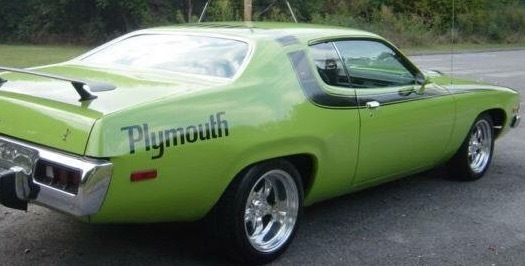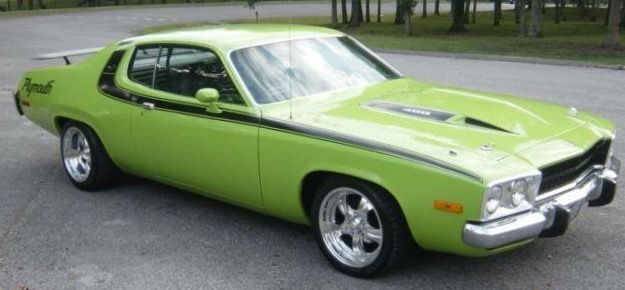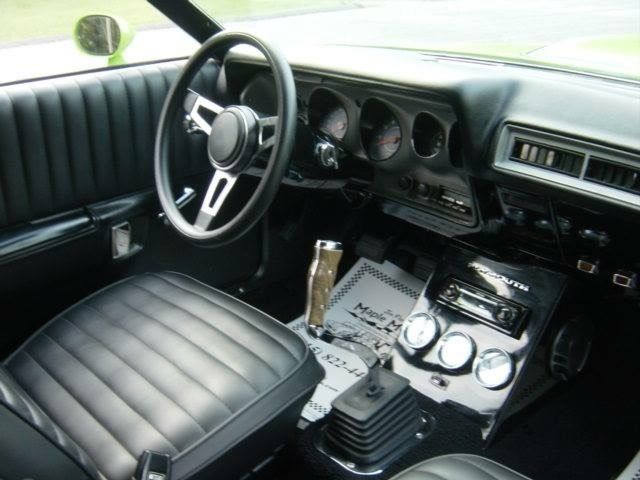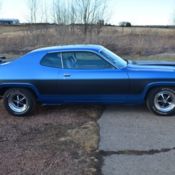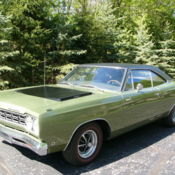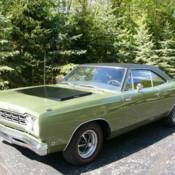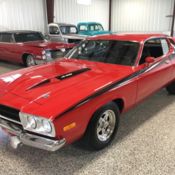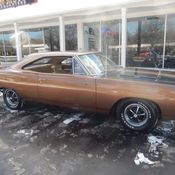Plymouth Road Runner, Mopar, Restored Classic American Muscle Car
Price: -
Item location: Boca Raton, Florida, United States
Description:
1974 Plymouth Road Runner
Fully Restored Turnkey 1974 Plymouth Road Runner.Rust Free, Factory A/C (blows cold), Hurst Pistol Grip, and Tint. New Paint and Call-Outs. The Engine Was Rebuilt 3,000 Miles Ago. Billet Specialties Rims. Interior, Exterior, and Under Carriage Near Flawless.I had to paint the vehicle because it was blended by the past owner. New wiring, Brakes, Battery, Alt, Starter.There's over $60k invested in this vehicle. I don't expect to recover my investment, but I expect a respectable number that's in line with what's been sold through major auction houses (minus the fees).The Road Runner is recognized as one of the most desirable muscle car investments available to the collector in the marketplace today. While most of the classic car market is suffering the Mopar family of cars (Dodge and Plymouth) such as the Charger, Demon, Daytona, Coronet, Superbird, Challenger, Cuda, Duster, Fury, and Road Runner continue to make huge gains in value. The average annual appreciation over the past three years has been 15%. By 2020, it's estimated that their value will have more than doubled, and by 2027 returns are expected to be in the range of 500%. The point is you're not just buying something that's sure to be pure enjoyment to drive, a ton of fun, and filled with nostalgic memories of times past... You're making an investment that when cared for properly will pay a big return in the years to come.I'm often peppered with questions about spotting an original over a fake Mopar. First, make sure the numbers match (VIN, Fender Tag, Driver's Door, and Engine Block). Second, understand what those letters and numbers mean. For example all 1970's era Road Runners have a VIN beginning with RM (this one does...) followed by "21" signifying that it's a 2-Door Coupe. The next two, P4, reveals the engine. This Road Runner is an RM21P4 (VIN and Fender Tag).She's a turnkey muscle car from day one that's ready rumble and turn heads from day one. The performance is exceptional and she doesn't begin to hum until the OD hits 90 mph, oil pressure stays steadily between 70-80, and the temp is always between 180-195 degrees even when the A/C is on high under the Florida summer heat. If you have a Mopar and can't figure out the overheating issue then consider two easy fixes - install a lower radiator hose with a coil, and make sure the clutch fan is functioning properly.Options include...Factory A/C that blows cold, Power Steering Steering Gear is in Great Condition, Solid Exhaust System, Correct Manifold, Exhaust Manifolds are Coated, New Wiring and Hoses. Beautiful Sublime Green Paint, Chrome and Stainless Trim are in Great Condition, Doors are in Perfect Line. Jambs are Clean and Solid Solid, Straight Quarters, Solid Trunk is Painted Body Color, Undercarriage is Clean and Factory Undercoated Solid Floorboards and Frame Rockers are in Great Shape, Wheel Wells are Clean. Billet Aluminum Rims.Matching Black Vinyl Interior Bucket Seats, Hurst Floor Shift, Aftermarket Stereo (AM/FM, Satelitte, iPhone, iPod, MP3 and Bluetooth)Door Panels, Dashare Beautiful, Seatbelts, Front and Back Headliner Fits Tight Across, Clean Black Carpet, Wipers Work, Speedo Works, Temp Gauge Works, and Horn Works (Beep Beep), Signals WorkHistoryThe Plymouth Road Runner was a performance car built by the Plymouth division of the Chrysler Corporation in the United States from 1968 to 1980. In 1968, the first muscle cars were, in the opinion of many, moving away from their roots as relatively cheap, fast cars as they gained options. Although Plymouth already had a performance car in the GTX, designers decided to go back to the drawing board and reincarnate the original muscle car concept. Plymouth wanted a car able to run 14-second times in the quarter mile (402 m) and sell for less than US$3000. Both goals were met, and the low-cost muscle car hit the street. The success of the Road Runner would far outpace the upscale and lower volume GTX, with which it was often confused.Most so-called experts will tell you that they're weren't any big block 400 or 440's produced in 1973 and 1974, but they're wrong. Why am I right and they're wrong? My grandfather was in charge of production for the Road Runner. The base for the 70's Road Runner was a 318-cu.in. two-barrel V-8 with dual exhaust and bright tips. Its 170-hp rating was 20 hp higher than the single-exhaust Satellite 318 engine. Optional was a 245-hp, 360-cu.in. V-8, which was new, a 250-hp 400 or a 275-hp 440 engine. Extra-cost engines received callouts on the hood, and the 440 also received GTX emblems. A three-speed manual transmission was standard, and a Hurst Pistol Grip-shifted four-speed was optional, as was the three-speed TorqueFlite automatic.I just passed the 30000 original mile mark. The engine was done at 27,000 miles.Vehicle Details:
- Condition: Used
- Make: Plymouth
- Model: Road Runner
- Type: COUPE
- Trim: 2 Door Coupe
- Year: 1974
- Mileage: 30,011
- VIN: RM21P4XXXXXXXX
- Color: GREEN
- Engine size: Mopar Big Block 440
- Number of cylinders: 8
- Power options: Air Conditioning
- Fuel: GASOLINE
- Transmission: 4 Speed Manual Pistol Grip
- Drive type: RWD
- Interior color: Black
- Safety options: Anti-Lock Brakes
- Vehicle Title: Clear Want to buy? Contact seller!
